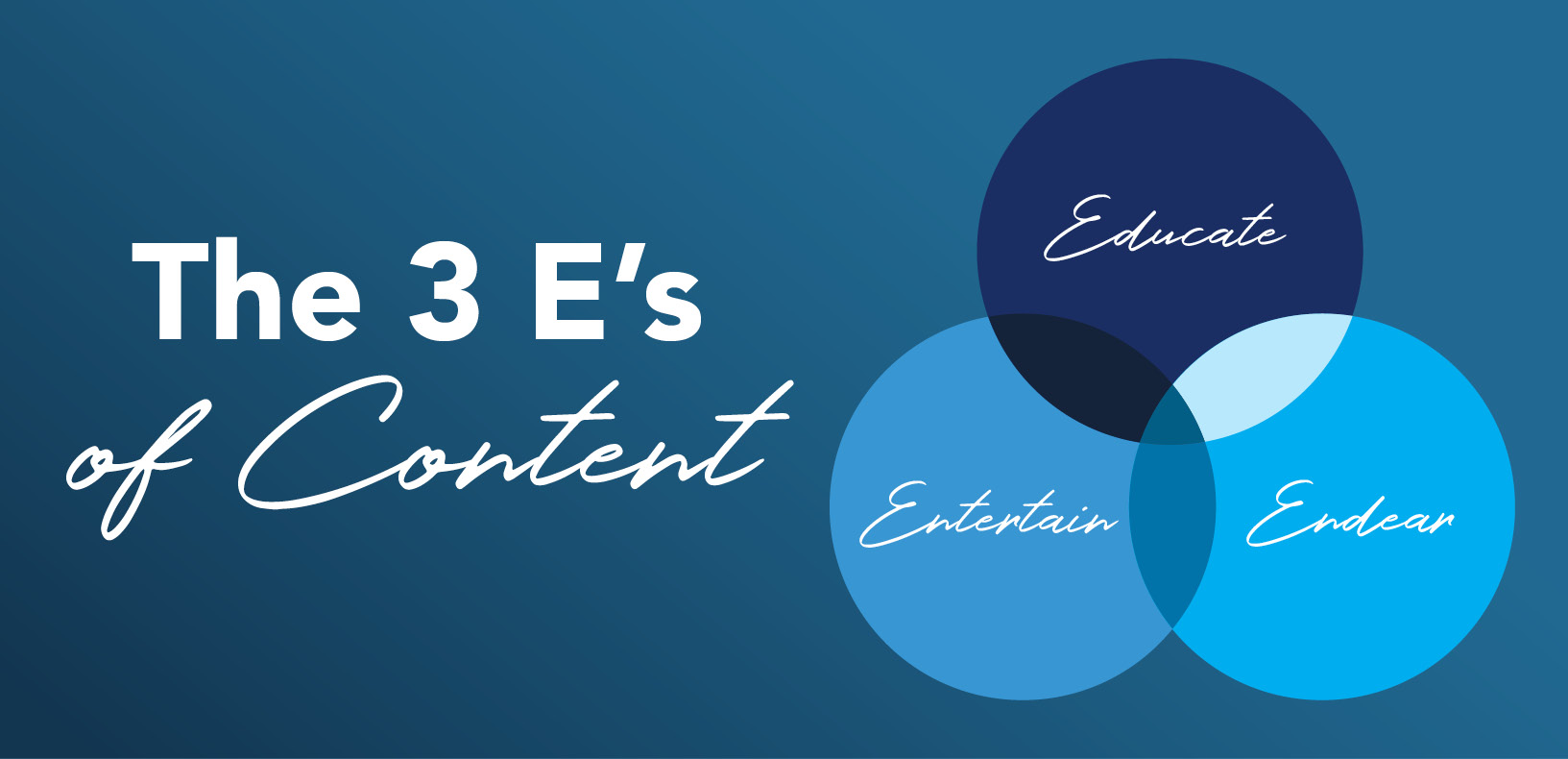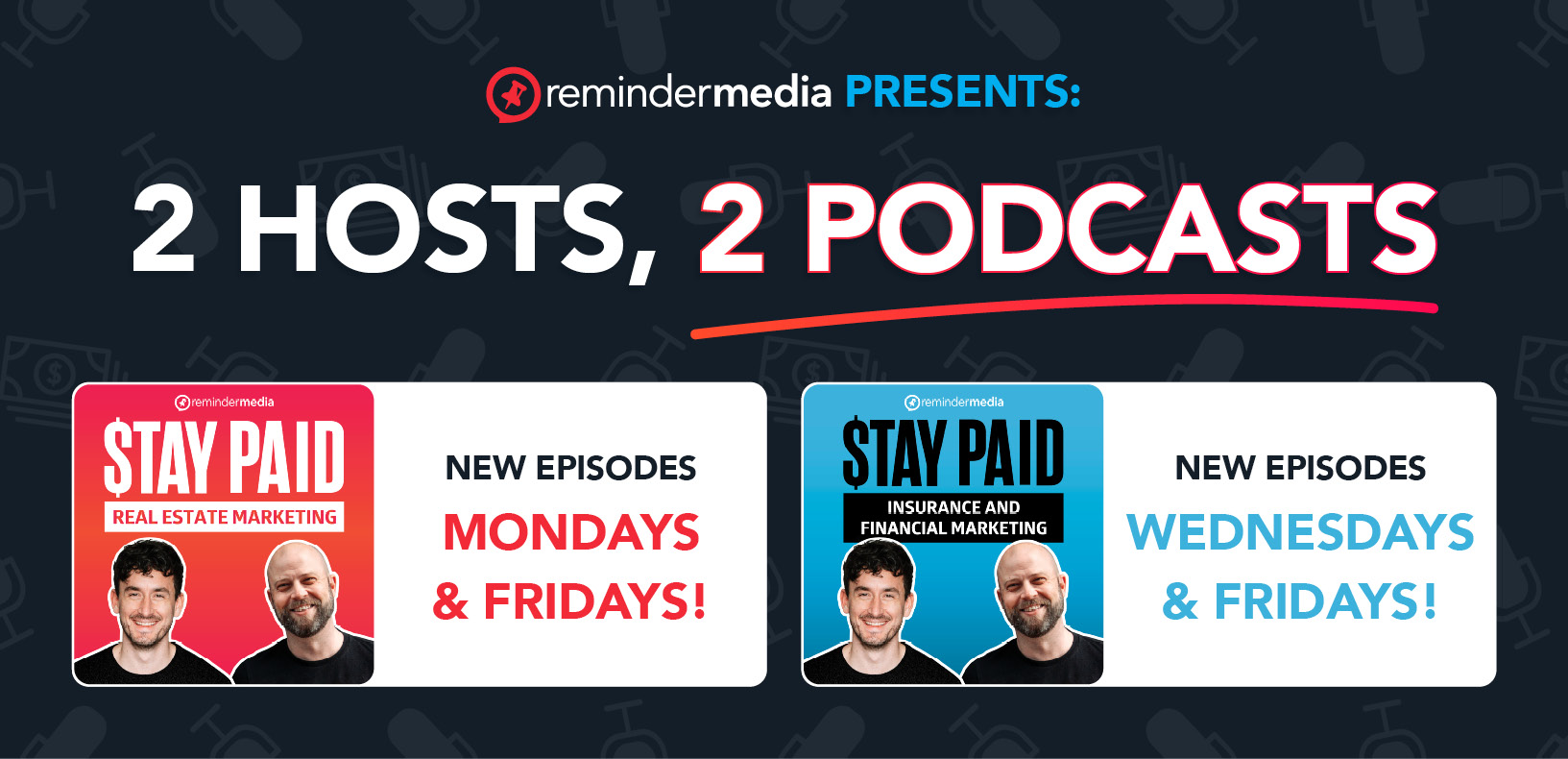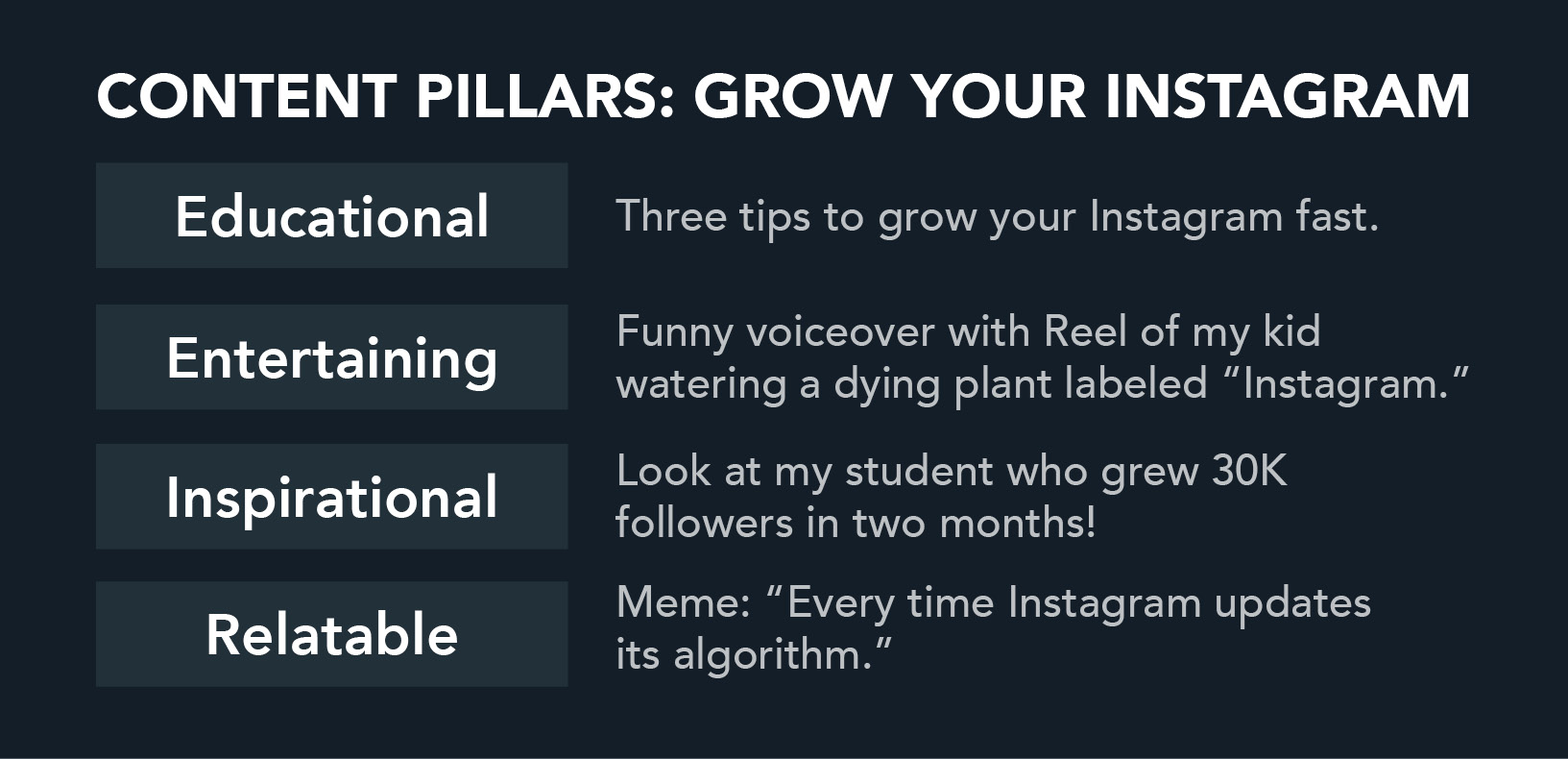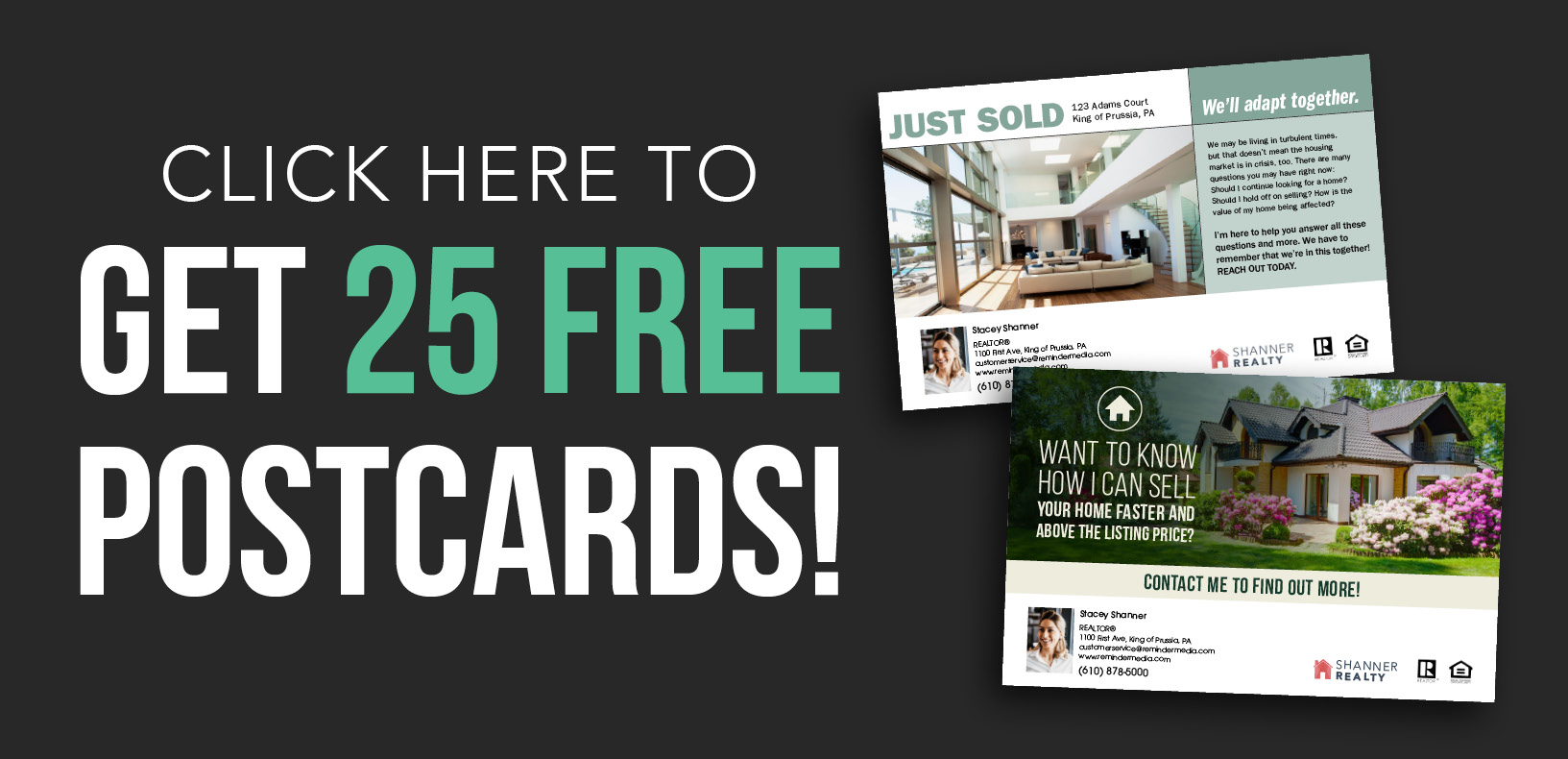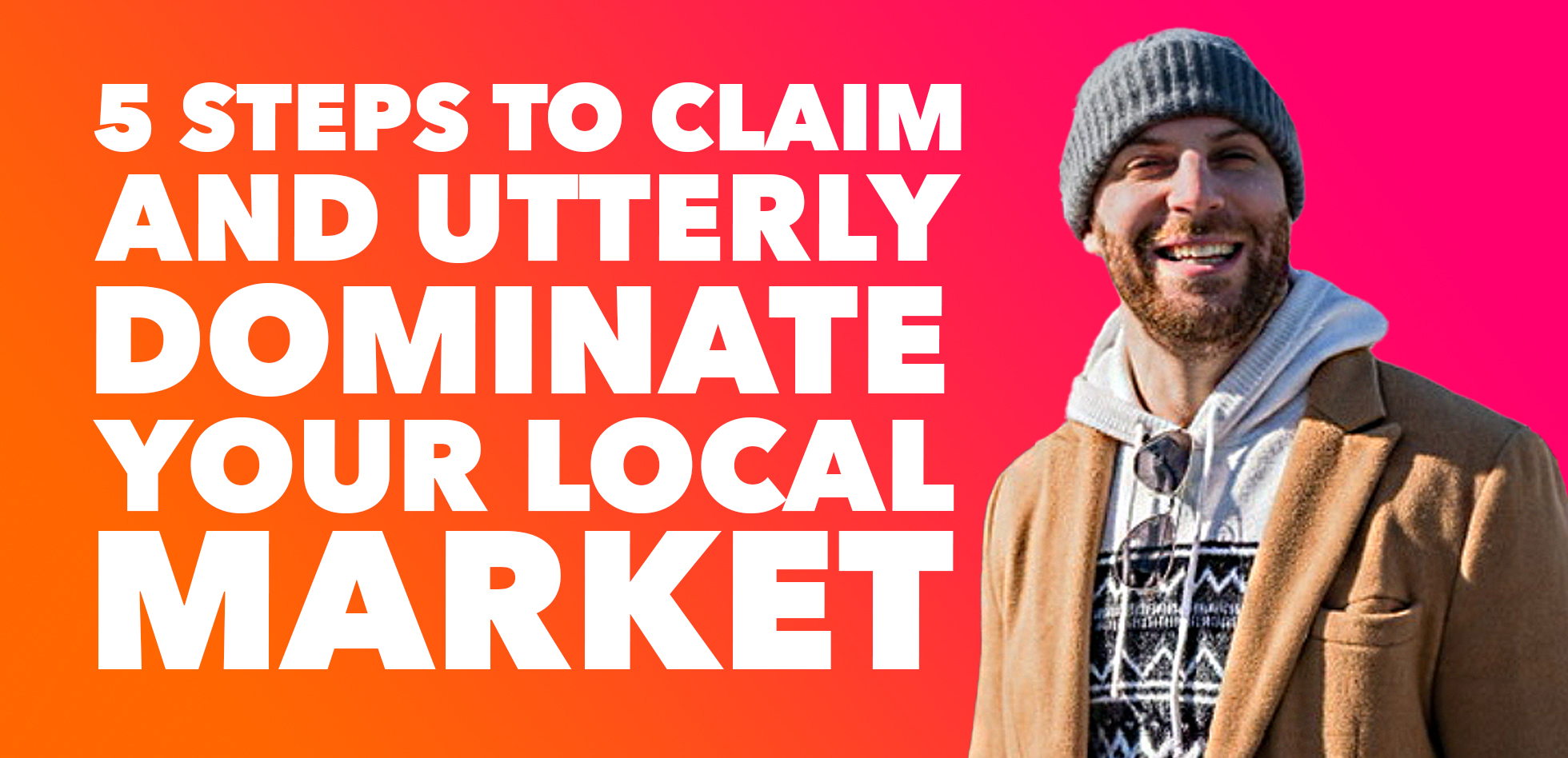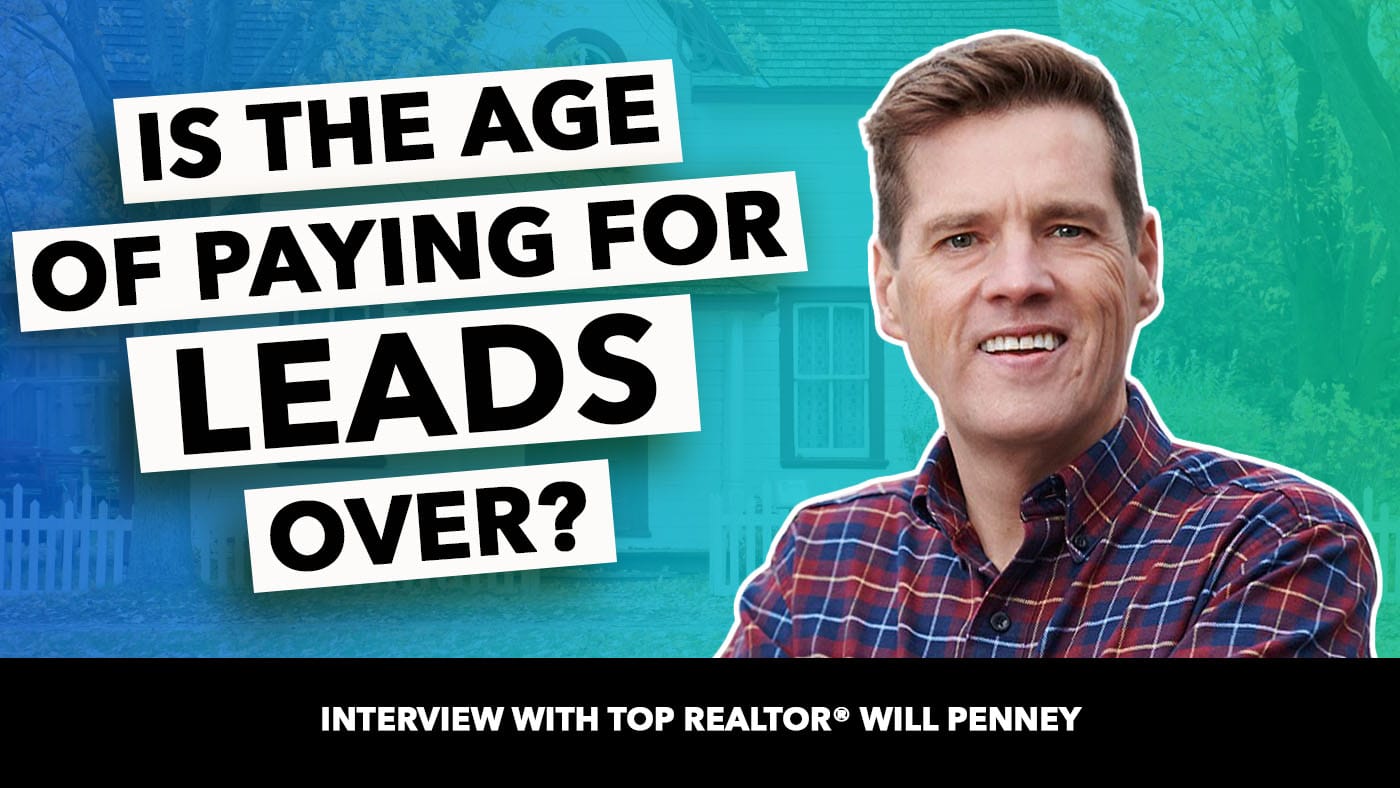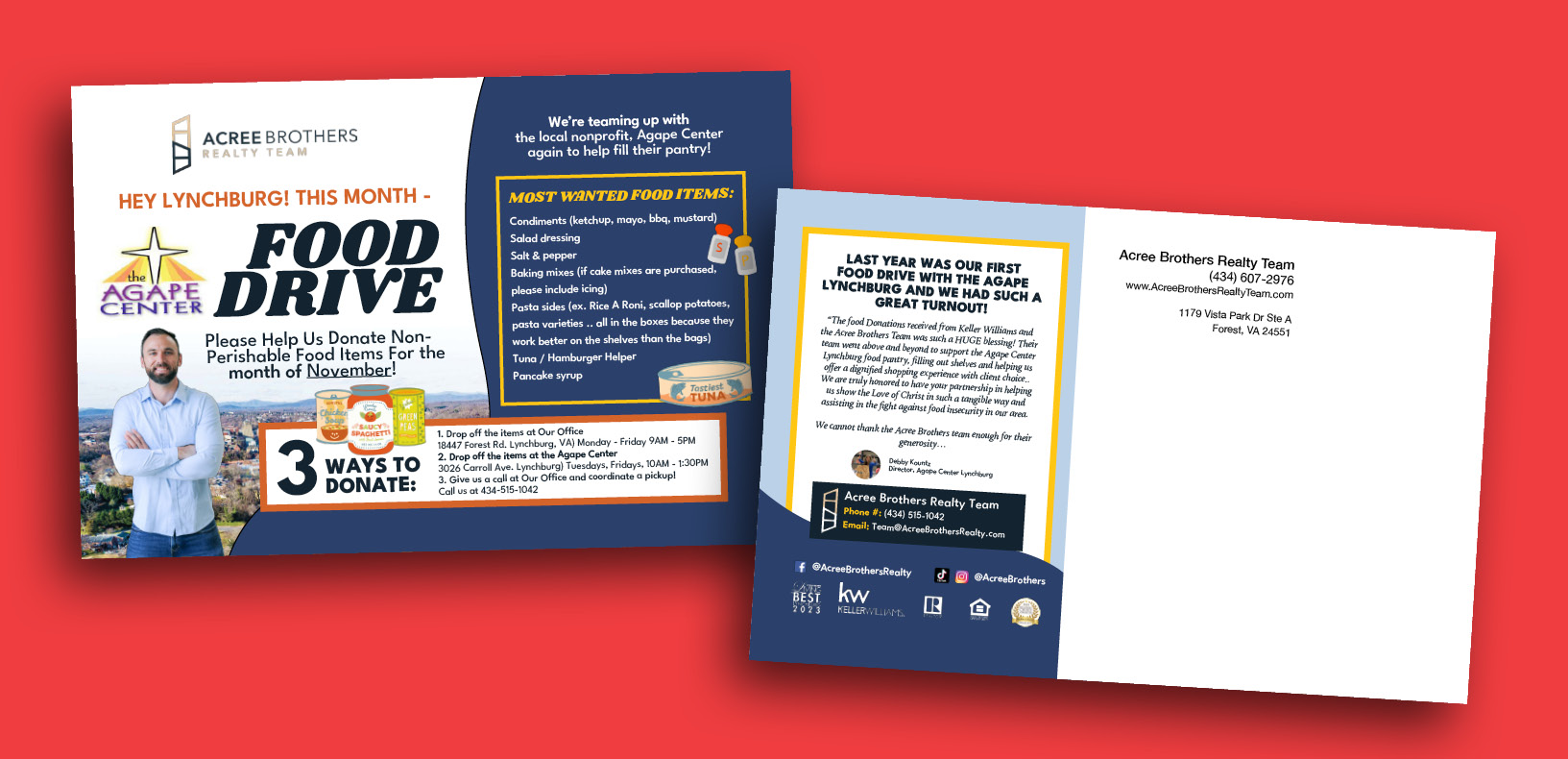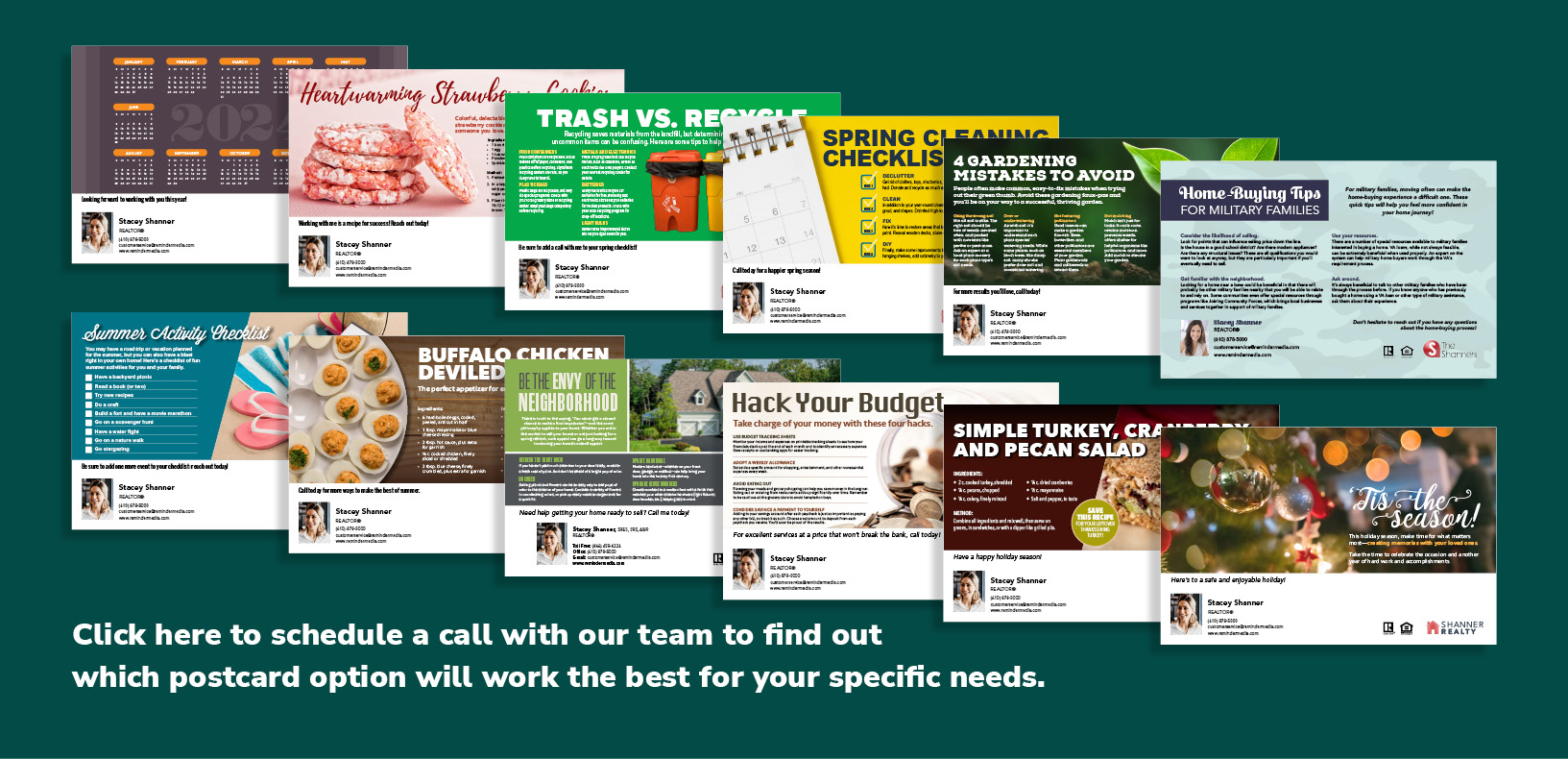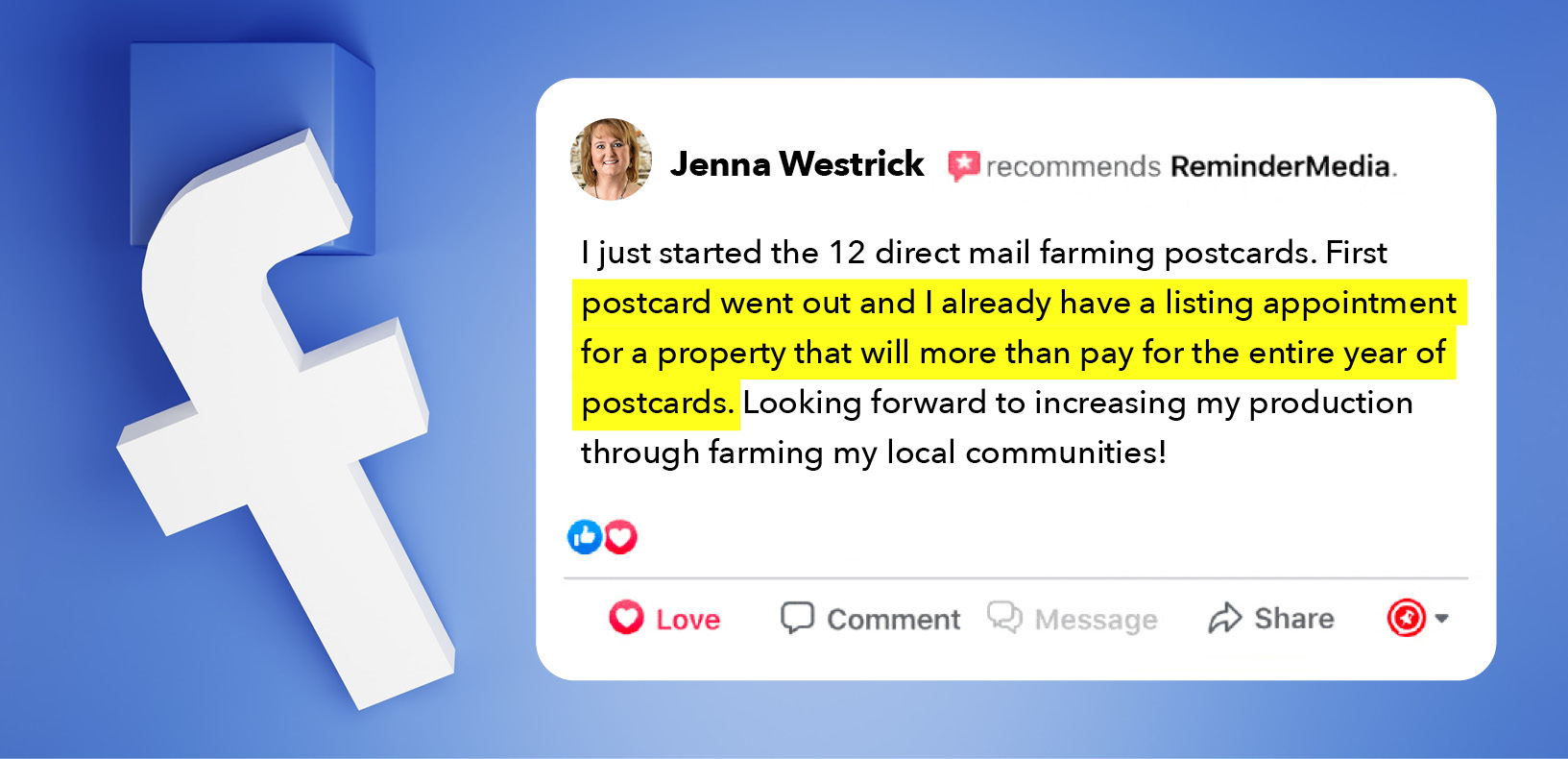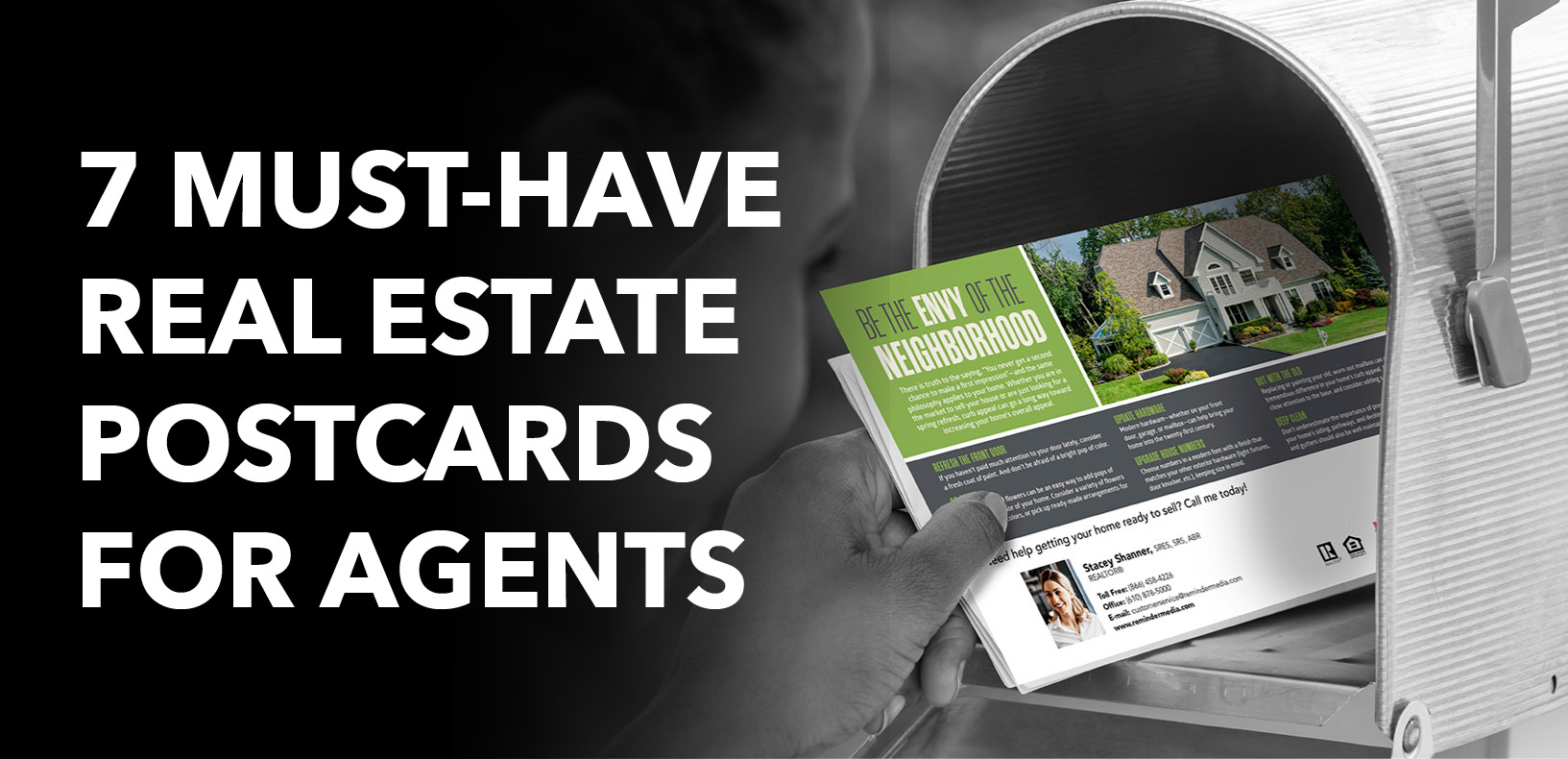“What type of content should I send to my audience?” is among small business owners’ most frequently asked questions. Use the 3 E’s and never worry again.
You’ve probably heard the buzz about content marketing, but if you’re not a marketing pro, you might still be wondering, “What’s the deal, and why should I bother?” Well, here’s the scoop: in today’s hypercompetitive world, content marketing is a necessary part of any successful business’s marketing plan. In addition to being among the most cost-effective strategies, supplying content that is valuable, relevant, and consistent promotes audience retention, raises brand awareness, produces leads, increases conversions, helps establish you as an industry authority, encourages higher rankings on SERPs, and creates brand advocates.
However, whether you’re a solo entrepreneur or a small business owner, content marketing can feel tricky to pull off. The real head-scratcher is figuring out the magic content formula that’ll resonate with your audience. In fact, “What type of content should I send to my audience?” is among the most frequently asked questions we get when we host one of our geo farming webinars.
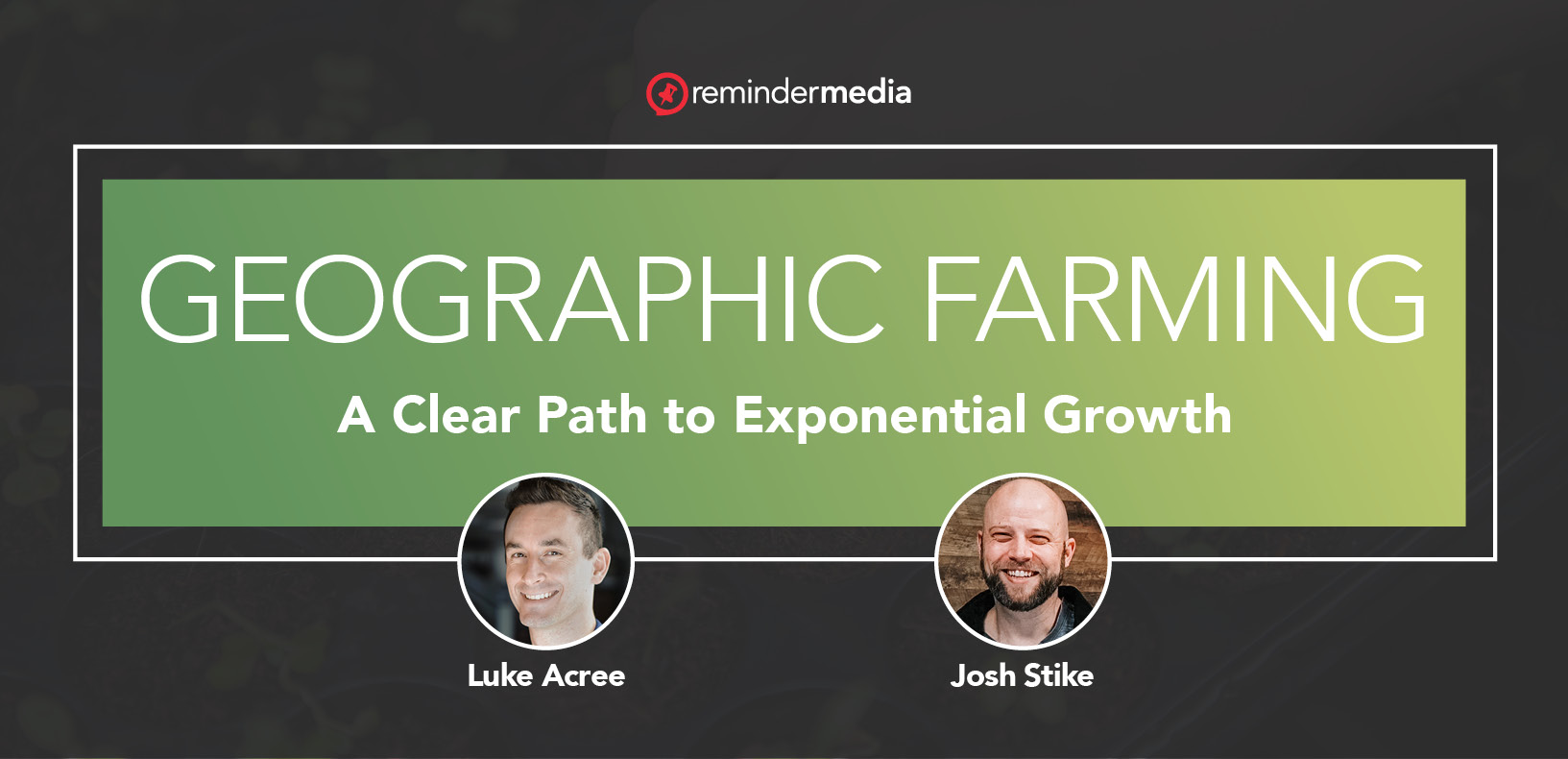
Click here to watch this free webinar.
That’s why we’re taking a deep dive into the game-changing 3 E’s of small businesses content marketing. Specifically tailored to those who aren’t marketing gurus, they can be used in any industry and applied to any channel. With them, you’ll never worry about what to post, email, record, or send again!
But before getting into the details and to avoid any confusion, let’s make a distinction between two terms you may have seen elsewhere: content pillars and value pillars.
Content pillars vs. value pillars
You can find a useful explanation of content pillars, including how to build them and a corresponding strategy here, but for right now, it’s enough to know that they’re what you want to write about—they’re the topics relevant to your business.
Value pillars, on the other hand, are how to approach those topics. While you’ll find those who recommend more or differently named value pillars, there’s no need to complicate matters. As content marketing experts devoted to helping busy entrepreneurs and solo proprietors with their marketing, we understand the importance of keeping things simple. That’s why we assist our clients in adopting the 3 E’s: present their topics in ways that educate, entertain, and endear.
By way of a quick example, let’s look at one of our most popular Stay Paid podcast guests, Millie Adrian, whose Instagram account, @itsmodernmillie, currently has over 148K followers. With an audience of this size, you can be sure her content is outstanding, delivering tremendous value to her audience. You can also imagine she must be consistently producing a lot of it to keep those followers engaged and coming back for more.
Millie’s solution is to create a social media content plan with a pillar content structure in place to ensure she always has a full pipeline of content to share. You can listen to her podcast interview for the full details, but the table below demonstrates how, from a single topic, she can produce multiple pieces of content representing her choice of value pillars.
Now let’s take a closer look at the 3 E’s—value pillars that educate, entertain, and endear—and explore their nuances, discovering the unique function of each and how they work together to attract leads that convert to customers.
Content marketing that educates
Educational content is designed to teach your intended audience about topics relevant to your industry or business that they will find valuable. This type of content works well to establish you as an authority and, in turn, helps build trust.
For example, if you’re a real estate agent, an obvious idea would be a video explaining the impact of rising interest rates on home sales. Another could be a postcard campaign to your farm announcing an upcoming seminar about understanding options for financing a home purchase. But there are countless other ways to educate your audience beyond these necessary but rather typical instances of self-promotion.
Sticking with the case of a real estate agent, additional content marketing examples that educate include posting a video in which you explain the pros and cons of buying a home warranty or using Facebook ads to offer free lead magnets such as “A Guide to Buying Your First Home” or “Preparing for Your Preapproval and Mortgage Application.” (You can download these and more free resources designed for additional industries from our Resource Library.) Or if you enjoy writing, you might author a LinkedIn article or a blog for your website about working with an agent to properly price a home for sale.
But here’s a word of caution about educational content—it can’t be the only type of content you produce.
Imagine you knew someone who only talked about themselves every time you met. Chances are you’d start avoiding that person. And, it’s the same for your business.
Too often, companies overload their audiences with information primarily about themselves and what they find important, leading the very consumers they are trying to attract to eventually start tuning out. As a result, the algorithms on social media stop pushing their content, fewer people are exposed to their brands, they lose leads, their businesses suffer, and the vicious downward spiral continues.
This is why there are 3 E’s and not just one—it’s essential to entertain your audience and endear them to you on top of educating them. This is the magic formula introduced at the beginning of this blog. A content plan that optimizes variety is one that your audience will enjoy, seek out or look forward to receiving, and readily share with others.
Content marketing that entertains
When it comes to entertaining content, you’ll experience the greatest degree of success by considering your ideal client and addressing what is broadly popular among them. Develop your content around common themes that speak to their experiences and interests, such as food, travel, pets, family, and local events and attractions.
Charles Weintraub, host of the Handsome Homebuyer podcast and CEO of Mandalay Holdings, gets an astonishing amount of engagement and new followers not by posting about real estate and investing. Rather, he finds the most success from sharing hyperlocal content about topics like the best Italian restaurant in Lindenhurst, Long Island. (Check out this snippet from his Stay Paid interview here.)
Meanwhile, Will Penney, one of the founders of the Penney Group with eXp Realty in northeast Ohio, created a private Facebook group for his clients that offers entertaining content spanning a wide range of topics in a variety of formats. It was such a phenomenal success that it inspired him to create Social Orchard—a company devoted to helping real estate agents provide entertaining content to their own groups. (Listen to him describe his strategy here.)
Content marketing that endears you to your audience
You’ve likely heard many times before that consumers want to do business with people they know, like, and trust. At ReminderMedia, we can speak from experience about the popularity of endearing content and its ability to achieve just that.
When our own president posted a picture to Instagram of his family at Christmas, it received more likes and comments than many of his Reels about marketing tips. That’s because it allowed his audience to identify with him as a husband and father and not simply a business owner. The holidays, family, and smiling babies in general have a wide appeal; these topics make people happy and are easy for them to connect with, thus endearing them to the poster.
But today’s consumers are demanding more from the companies they support than simply feel-good images. According to Forbes, they are “increasingly looking to connect with brands that share their values and stand for something beyond just making a profit.” Enter the strategy described by one sales-and-marketing expert of establishing a purpose, or “reason for being,” that goes beyond making a profit.
However, you don’t need to revamp your entire business model to demonstrate that you’re about more than making money. Consumers just want to know that you’re giving back in a meaningful way; and something as simple as supporting a local animal rescue center can satisfy this need. Consequently, sharing how your business gives back is not something you should keep secret.
Consider the example of the Acree Brothers Realty Team in Lynchburg, Virginia. They promote their ongoing support of a local food bank through numerous channels as a way of endearing themselves to the community while genuinely providing much-needed assistance to a worthy cause. (Full disclosure: the founder of this team, Stephen Acree, is one of our president’s brothers.)
First, they conduct a postcard campaign informing their neighbors about the details of the food drive and inviting them to participate. They then advertise the drive on social media and their website, and as the day of the drive approaches, send text messages to remind people of the upcoming event.
On the appointed day, the agents drive to homes to collect the donated items, giving them the opportunity to meet face-to-face with homeowners. A photographer is on hand to take pictures and record videos, which the team later posts along with the results of the food drive and their gratitude to the community for their support. They also follow up with phone calls to personally thank people for their generosity.
Each interaction is a touchpoint with potential clients that helps form and nurture relationships.
In addition to garnering goodwill, businesses that give back benefit from the halo effect—a cognitive bias that encourages a generalized positive perception of a person, product, or brand based on a single attribute. In short, if you promote content about your support or contribution to a cause or, as in the example earlier, post a picture of a happy and loving family, then by virtue of the halo effect, people will assume that you’re not only generous but also kind, thoughtful, selfless, and caring. And, by further extension, they’ll think of you as someone they can trust to meet their needs. All in all, endearing content influences consumers to do business with you over your competitors.
The easy solution to content marketing featuring the 3 E’s
You know you need to provide content, but you also know that you can’t restrict what you share to information solely about your business. The 3 E’s are a way to provide additional value that goes beyond self-promotion to further build and engage your audience. They help you plan your content and increase your efficiency by offering options for multiple ways to use the same content.
The key to utilizing content as a marketing tool is to consistently provide your audience with value and have them associate that value with your name and brand. We achieve this result for our clients by providing a host of the highest-quality personally branded digital and print marketing tools. All are designed and automated to provide content that is educational, entertaining, and endearing while keeping you top of mind for more referral and repeat business.
In particular, our automated postcard campaigns ensure that your list of recipients receives a memorable mix of content that includes seasonal recipes, local sports schedules, DIY projects, helpful tips, and more. Our team of professional designers and direct-mail experts will also create custom designs to meet your unique needs. Schedule a video call with one of our marketing advisors today to talk about a campaign cadence best suited to your goals. Be sure to ask about our special offer of 25 free postcards with your first order and a free landing page to capture leads.









 Apple Podcasts
Apple Podcasts
 Google Play
Google Play
 Spotify
Spotify







